
The Excalibur car cover is not just a casual tarp thrown over when the car is parked. For a neo-classic, pre-war–styled vehicle like the Excalibur, the right cover is essentially a “passive protection ecosystem” that surrounds the body: it regulates humidity, reduces peak heat, blocks fine dust, stabilizes geometry to limit repetitive friction, and most importantly, uses a genuinely soft, light-colored, colorfast lining that leaves no fabric pattern marks on paint or gelcoat. Many owners in the U.S. have felt that sinking disappointment: after a few weeks in a carport, they lift the cover to find a musty odor, faint fabric-pattern haze on the surface, light rub marks on fenders, or speckled chrome. The issue is often not “whether it’s covered or not,” but which type of cover and how it’s used. This article breaks down causes, effects, and solutions in a practical way, tailored to U.S. climate contexts, so you can confidently choose the right soft-lining, non-imprinting, dustproof, scratch-resistant, breathable, form-stable configuration for your Excalibur.
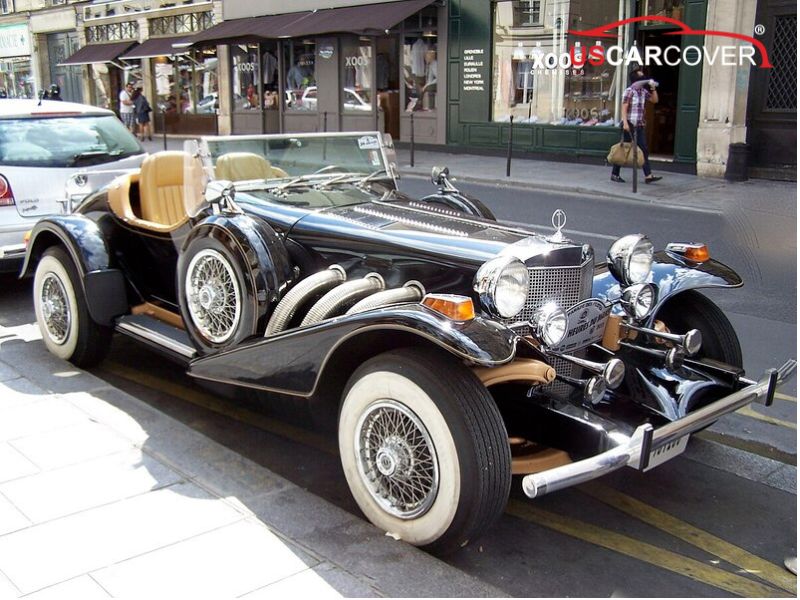
Related Articles: Essex car cover is lightweight yet durable: protecting classic cars from sun and rain
Excalibur in the context of preservation: exceptionally beautiful, exceptionally sensitive

Before discussing covers, look again at the Excalibur: the long hood, oversized fenders, open wheel wells, side exhausts, raised emblems, thick chrome trim, and on some versions, deep-gloss fiberglass bodywork. These details define its distinctive charisma but also create “contact edges” once covered. Excess fabric flutters in the wind and rubs those contours; dark or coarse linings can stamp their texture when temperature rises and drops; micro-condensation on chrome leaves white mineral spots if humidity is trapped.
Related Articles: Dodge car cover: Ultra durable, compact, lightweight, and designed to dissipate heat
Imprinting on paint and gelcoat: why it happens, what it looks like, and how to prevent it
Many owners pull a cover after a few weeks in a carport and see a “hazy ring” matching the liner weave. Face on, it is hard to notice, but tilt the surface in late-afternoon sun in California or Texas and it pops. It feels like the surface has been “stamped” with a faint texture. That is imprinting (ghost pattern), the number one enemy of deep-gloss paint and gelcoat over fiberglass.
Root causes:
- Coarse or raised liner weave: a micro-uneven contact map creates pressure points.
- Micro humidity trapped: humid garage, night dew, the car still slightly damp after a wash or short drive.
- Day to night thermal cycles: high daytime peaks soften paint or gelcoat slightly, then drop at night. Combined with trapped humidity at the interface, raised liner points transfer a faint pattern.
- Covering while the car is still warm: engine bay heat has not dropped, water vapor “sits” under the cover, raising imprint risk on hood, fenders, and soft top.
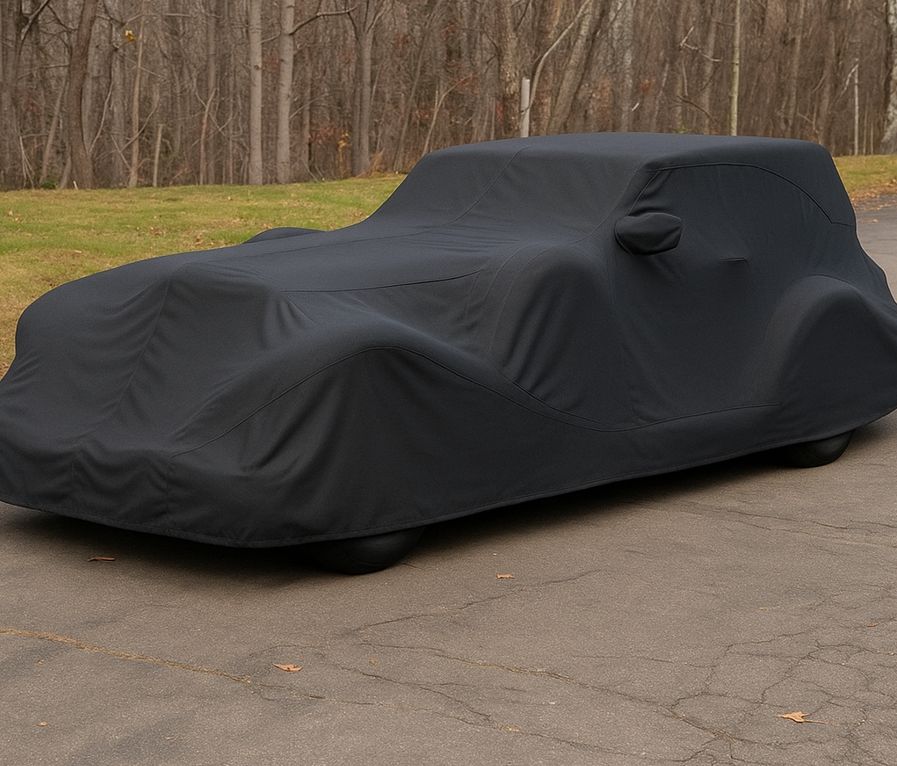
Real-world consequences: It starts as subtle haze, then becomes a slight tone shift against adjacent panels. On gelcoat or classic finishes, correction often requires light polishing, which risks chipping away at originality if repeated.
How to fix it for good:
- Choose an ultra-soft, light-colored, colorfast liner with gentle antistatic treatment. Velvet-like nap spreads contact pressure evenly. A light color lets you spot contaminants early and lint-roll before covering.
- Prioritize truly breathable multi-layer fabric with shrouded vents. Let water vapor migrate outward instead of condensing at the surface. Place vent hoods at the shoulders or near the rear glass to bleed heat without wicking rain inward.
- Follow the dry – cool – clean rule before covering. Allow the body to cool completely. Dab away droplets at glass edges, chrome, and soft-top folds. Lint-roll the liner to remove clinging particles.
- Run a 180-second preflight test on new covers: rub a slightly damp white towel on the liner for 10 to 15 seconds (no dye transfer), feel for nap smoothness (no grit), and sprinkle a pinch of fine dust on the shell and shake off (low stick is good).
Related Articles: Dual-Ghia car cover for long-term storage: quick-dry, no musty odor, no soft-top mildew
Dust adhesion and the “invisible sandpaper”: how to keep dust from getting the upper hand

In the Inland Empire, New Mexico, West Texas, or suburban build zones, fine dust is daily life. You may think “dust on a cover only makes the cover dirty,” but in practice that dust becomes micro abrasive. Every gust that moves fabric is a pass of grit across paint. After weeks or months, swirl marks appear even though you “never rubbed the car hard.”.
Underlying causes:
- Sticky outer shell: gloss-like finishes grab dust and pollen, forcing towel-wiping and pushing debris into the liner.
- Static on the liner: no antistatic treatment means the liner clings to fines like a magnet.
- Free-size excess fabric: puffing and collapsing in the wind pulls fabric back and forth on the surface and drags dust.
- Wrong cleaning habit: dry-wiping a dusty cover compresses contamination through the liner and ghosts onto paint.
Consequences:
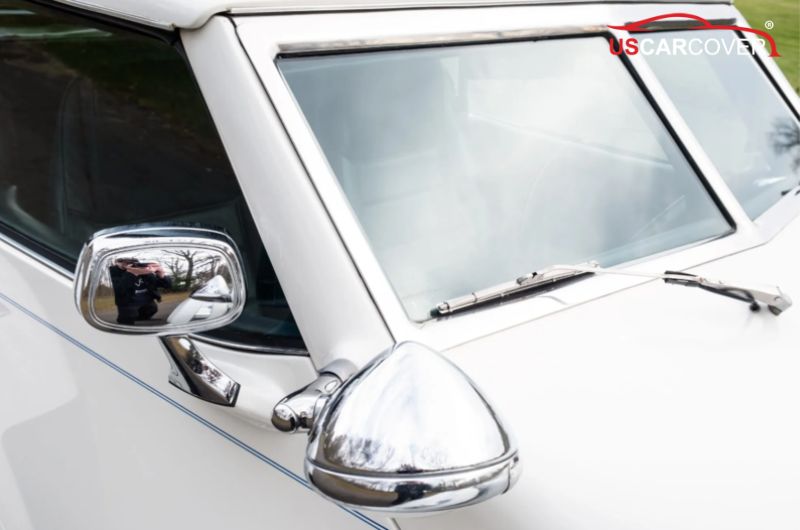
- Micro swirl marks: visible under raking sunlight or shop lights, and time-consuming to refine.
- Loss of “depth”: Excalibur’s deep-gloss looks flat, and chrome loses sparkle.
- More frequent correction cycles: more marks mean more polishing, with long-term paint-thickness risk.
The right, complete solution:
- Pick a low-stick, matte-finish outer shell. Ideally dust and pollen fall away with a few shakes, so you almost never need to wipe.
- Use a gently antistatic, light-colored liner. Reduced static limits dust attraction. The light color reveals contamination to remove before covering.
- Custom-fit tight to the body to remove excess fabric. The less “sail,” the less dust gets dragged across paint.
- Reasonable cleaning cadence: outdoors in dusty areas, launder every 2 to 4 weeks. In a clean garage, every 6 to 8 weeks. Always air-dry fully in shade.
- Adopt the “shake, not wipe” rule: before removing or re-covering, shake the shell so debris falls. Only wipe when necessary, with a clean towel and very light touch.

Related Articles: How To Protect Your Eagle: Compact tools that matter in your car
Paint scratches from repeated friction: how to “lock” the cover’s movement and kill the risk
The Great Plains, Tornado Alley, or open lots along highways often bring wind that shifts direction without warning. On Excalibur, long fenders, open wheel arches, and side exhausts create many “wind catch” points. If a cover will not hold its form, extra fabric breathes steadily like a lung and scrubs along edges, chrome, and raised emblems. That is why you find profile-matching scratch lines after windy nights.

Common causes:
- Free-size covers: do not hug Excalibur’s shape, leaving sail pockets at the tail, flanks, and wheel arches.
- Too few anchors or uneven tension: one strap over-tightened puts all load into a single grommet while the rest floats and oscillates.
- No shrouded vents: heat cannot bleed, so after sun and rain the cover inflates and roams.
- Grit trapped between liner and paint: repeated movement over debris is exactly “fine-grit sandpaper."
Consequences:
- Edge-line scratches: crisp along fender lips, hood seams, and chrome edges.
- Higher polishing or detailing bills: especially painful on deep-gloss or gelcoat finishes.
- Premature cover wear: grommets tear and seams fray because loads are uneven.
A 3-layer solution to hold form:
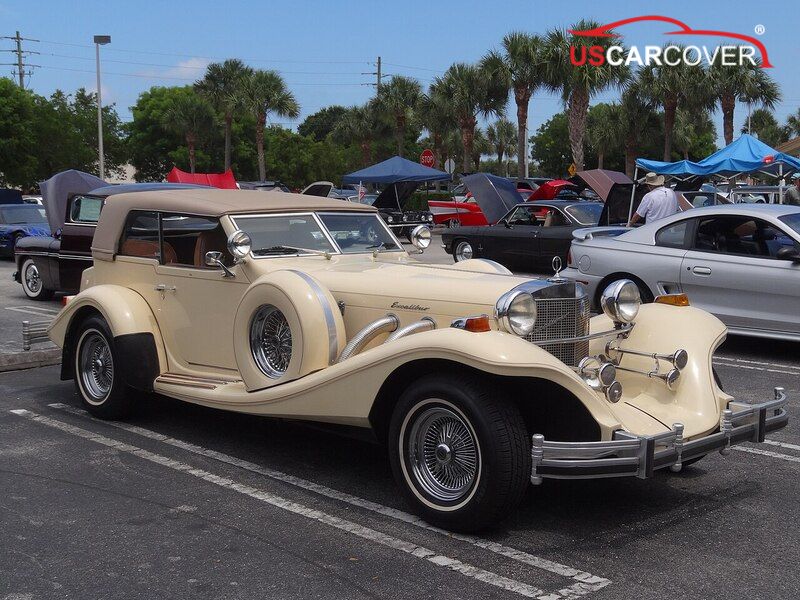
- Custom-fit to Excalibur geometry: with mirror pockets, emblem allowances, and tailored zones around side exhausts and long fenders so fabric is not loose.
- Soft, wide multi-point tie-downs plus an underbody cable lock: spread loads evenly, use soft hem elasticity to grip edges without imprinting, and keep the cover from lifting in swirling winds.
- Shrouded vents, breathable fabric, and ripstop shell: purge heat to reduce ballooning. If a gust tears, ripstop prevents the rip from running.
Related Articles: Edsel car cover: Scratch protection and minor bump safety under sun and rain
Recommended Excalibur car cover configuration: optimized for the 3 core risks

Instead of asking “how many layers,” start with “does this cover defeat imprinting, dust, and scratches.” The configuration below targets all three, with notes on why each detail matters.
Detailed recommendations:
- Ultra-soft, light-colored, gently antistatic liner: velvet-like for no imprinting, light for easy contaminant spotting, antistatic to reduce fine-dust cling.
- Ultra-soft, light-colored, gently antistatic liner: velvet-like for no imprinting, light for easy contaminant spotting, antistatic to reduce fine-dust cling.
- Low-stick, matte outer shell: dust and pollen shed with a shake, minimizing the need to wipe.
- Precise custom-fit for Excalibur: wraps the major masses, patterns for side exhaust, wheel arches, long fenders, and raised emblems.
- Soft hem, wide tie-downs, reinforced grommets, and a plastic-coated underbody cable: holds form, spreads loads, wind-durable, and surface-friendly.
- Silver-gray or light titanium with UV resistance: balances heat reflection with daily stain camouflage, and keeps cover materials stable.
Related Articles: DeTomaso Car Covers - Reduce cabin temperature and which color cover is cleaner while keeping the car cool?
Common mistakes that worsen imprinting, dust, and scratches, and how to fix them now
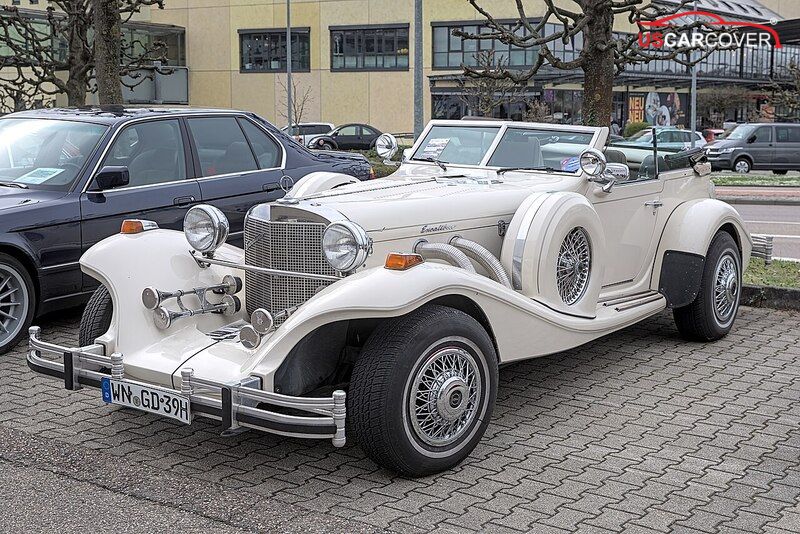
The good news is most issues come from habits and can be corrected immediately without big costs: Covering while damp or warm: the recipe for imprinting and a musty baseline. Fix it by waiting until fully dry and cool, opening vents correctly, and managing garage humidity. Using excess free-size fabric: creates sail pockets that scrub edges. Switch to custom-fit and add soft, multi-point anchors. Coarse, dark-dyed liners: increase friction and dye transfer risk. Choose ultra-soft, light-colored liners, and verify with a white towel test. Wiping instead of shaking: drives dust into the liner and raises swirl marks. Use shake first, and only wipe with a clean towel when necessary. Uneven strap tension: tears grommets and lets the other side float. Always balance loads and check both sides.
Related Articles: How to Protect Datsun from Harsh Sun and UV: keep paint and interior looking new
Solve imprinting, dust, and scratches with a coordinated system

Protecting Excalibur the right way is not about “how thick the cover is.” It is about coordination of materials, geometry, and routine. When you use an Excalibur car cover with an ultra-soft, light-colored, gently antistatic liner to block imprinting, pick a low-stick shell and the shake-not-wipe rule to defeat dust, then combine custom-fit, multi-point anchoring, and shrouded vents to eliminate friction scratches, the three biggest risks are essentially locked out from the start. Add a 90-second on-off habit and a sensible cleaning schedule, and every time you lift the cover you get the same reassurance: no ghosting, no odd new swirl marks, no profile-line scratches. That is when a cover stops simply “hiding the car” and truly preserves the Excalibur character over time
